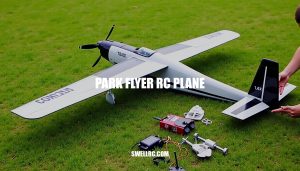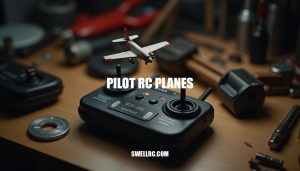Out Latest Blog Posts
Ever wondered what it feels like to own the track, rule the air, and command the waves — all from your fingertips?
Welcome to the world of RC, where miniature machines pack full-sized thrills. Our site is your launchpad to explore the best in RC cars, planes, boats, helicopters, and drones.
From tuning tips that shave seconds off your lap times to behind-the-scenes looks at the latest RC tech, every click takes you deeper into the action.
Build. Fly. Race. Repeat. Let’s make every session legendary.
Radio Control Cars

HPI WR8 Flux Review: A Rally Car That Redefines Realism
After hours of fine-tuning camber and throttle endpoints, my first

Mastering the Art of HPI RC Drift Car
After hours behind the transmitter, feathering the throttle through a

Traxxas Mini Slash Review: Compact Power, Endless Fun
I recently rediscovered the Traxxas Mini Slash after a weekend
Radio Control Airplanes

Top RC Airplane Companies for Beginners and Experts Alike
After a week of dawn flights at the club field,

The Ultimate Guide to Park Flyer RC Planes
One serene morning, I brought a featherweight foam trainer to

Freewing Planes Review: Unleashing the Thrill of RC Jet Flying
After countless hours testing different RC planes on windy club
Radio Control Boats

Blue Streak RC Boat Review: A Top-Notch Electric RC Boat for Beginners and Experts
After hours of chasing speed down lake edges and swapping

RC Boat Turbine Engine Guide: Performance, Safety, and Maintenance
The first time I heard an RC turbine engine spool

Mastering Model Boat Electric Motors: A Comprehensive Guide
I fell in love with RC boating the first time
Radio Control Helicopters

XK K110S Helicopter Review: A Beginner-Friendly and Advanced RC Flying Experience
The XK K110S helicopter offers an impressive leap for anyone

Sab Goblin Helicopters: Expert Review and Buying Guide
The first time I saw SAB Goblin helicopters lift off,

Ikarus Eco 8 Helicopter Review: A Classic RC Model’s Enduring Legacy
I recently rediscovered my Ikarus Eco 8, a timeless gem
Radio Control Quadcopters

Pilot RC Planes: Expert Insights and Beginner-Friendly Options
After countless hours comparing builds, tweaking control throws, and swapping

FPV RC Helicopter: Mastering Immersive Flight
The first time I slipped on FPV goggles and spooled

Mastering Buddy RC Planes: A Beginner’s Guide to Safe and Effective Training
The first time I flew with a buddy RC planes
